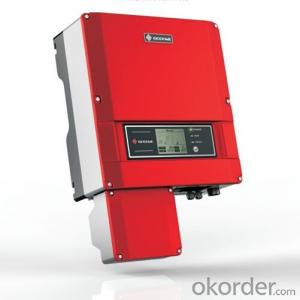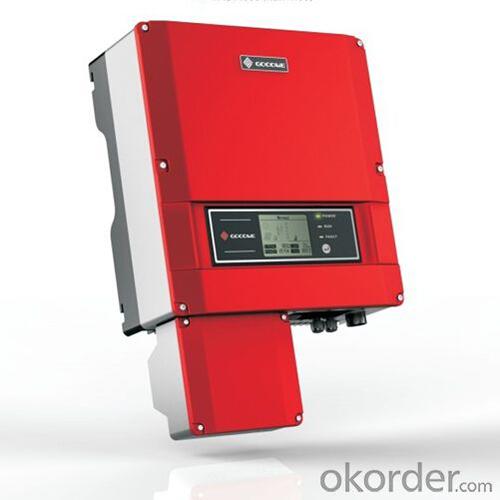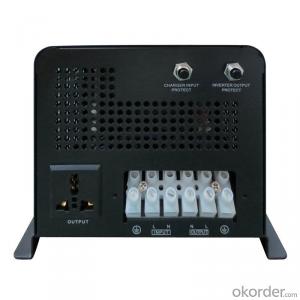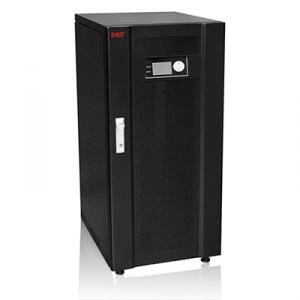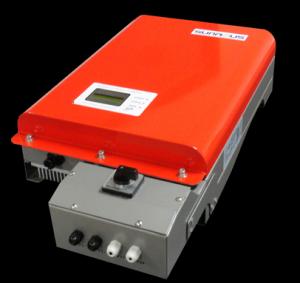Riso Low Solar Inverter GW3000D-DI (High Frequency Isolated)
OKorder Service Pledge
OKorder Financial Service
You Might Also Like
GW3000/3600/4200D-DI (High Frequency Isolated) is the new on-grid PV inverter which integrated with most advanced technology, come with 10 years warranty,
and are designed to meet the new IEE1547 requirements for the North American market. Also it’s suitable for thick-film modules.
Easy installation and simple operation make them ideal for residential and small-to-medium commercial applications.
GoodWe inverters, with ever-increasing efficiency and high stability,
could ensure you better overall performance of solar power systems and shorter payback periods.
Datasheet
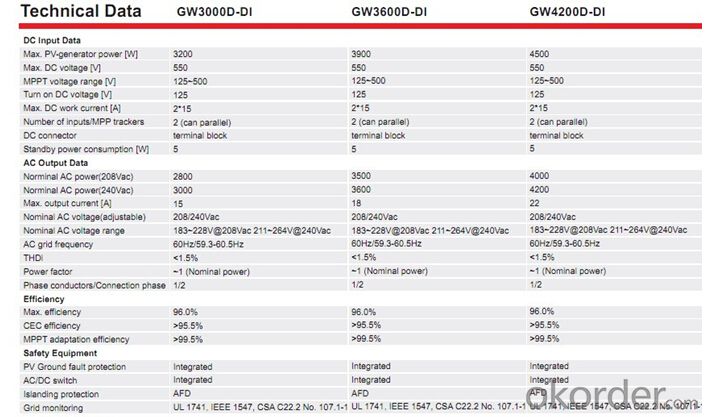
- Q: What is the role of a solar inverter in maximizing solar panel output?
- The role of a solar inverter in maximizing solar panel output is to convert the direct current (DC) produced by the solar panels into alternating current (AC) that can be used to power electrical devices in our homes and businesses. Additionally, solar inverters also ensure that the solar panels are operating at their maximum power point, which allows for optimal energy production and efficiency.
- Q: Can a solar inverter be used in standalone power systems?
- Yes, a solar inverter can be used in standalone power systems. Standalone power systems, also known as off-grid systems, are not connected to the main electricity grid and rely on alternative energy sources like solar panels. A solar inverter converts the direct current (DC) generated by the solar panels into usable alternating current (AC) electricity, which can power various electrical devices in standalone power systems.
- Q: Can a solar inverter be installed outdoors?
- Yes, a solar inverter can be installed outdoors. However, it is important to ensure that the inverter is designed to be weatherproof and can withstand the elements. Additionally, proper ventilation and protection from direct sunlight should be considered when installing the inverter outdoors.
- Q: What is the purpose of a solar inverter?
- The purpose of a solar inverter is to convert the direct current (DC) electricity generated by solar panels into alternating current (AC) electricity that can be used to power household appliances or be fed back into the electrical grid.
- Q: How does a solar inverter handle low light conditions?
- A solar inverter handles low light conditions by utilizing advanced technologies such as maximum power point tracking (MPPT) and voltage boosters. These technologies enable the inverter to efficiently convert the limited amount of sunlight available during low light conditions into usable electricity. The MPPT algorithm adjusts the voltage and current to maximize the power output, while voltage boosters increase the voltage to compensate for the reduced sunlight. This ensures that the solar inverter can still generate electricity even in low light conditions.
- Q: What is the importance of insulation resistance measurement in a solar inverter?
- Insulation resistance measurement in a solar inverter is crucial as it helps ensure the safety and efficiency of the electrical system. By measuring the insulation resistance, any potential faults or deteriorations in the insulation can be detected, preventing electrical leakage or short circuits. This measurement also helps identify any insulation breakdowns that may compromise the performance and reliability of the solar inverter. Ultimately, insulation resistance measurement is essential for maintaining the integrity of the solar inverter and ensuring the safety of both the electrical system and the people using it.
- Q: Can a solar inverter be used with a hybrid solar power system?
- Yes, a solar inverter can be used with a hybrid solar power system. A hybrid solar power system combines solar energy with other sources such as batteries or the electrical grid. The solar inverter is responsible for converting the direct current (DC) generated by the solar panels into alternating current (AC) that can be used to power household appliances or fed back into the grid. It plays a crucial role in ensuring the compatibility and efficient operation of the hybrid solar power system.
- Q: Can a solar inverter be used with a hybrid solar system?
- Yes, a solar inverter can be used with a hybrid solar system. A hybrid solar system combines solar power with other power sources, such as batteries or a backup generator. The solar inverter converts the direct current (DC) electricity generated by the solar panels into alternating current (AC) electricity, which can be used to power appliances and devices. Whether it is a grid-tied, off-grid, or hybrid solar system, a solar inverter is an essential component for converting and utilizing the solar energy effectively.
- Q: Can a solar inverter be used in extreme weather conditions?
- Yes, solar inverters are designed to withstand a wide range of weather conditions, including extreme heat, cold, humidity, and even harsh environmental factors. They are built to be durable and reliable, ensuring their functionality and performance in various climates and weather conditions.
- Q: Can a solar inverter be used with thin-film solar panels?
- Yes, a solar inverter can be used with thin-film solar panels. Thin-film solar panels have different electrical characteristics compared to traditional crystalline solar panels, but a suitable solar inverter can be selected to match the voltage and current requirements of the thin-film panels.
Send your message to us
Riso Low Solar Inverter GW3000D-DI (High Frequency Isolated)
OKorder Service Pledge
OKorder Financial Service
Similar products
Hot products
Hot Searches
Related keywords
